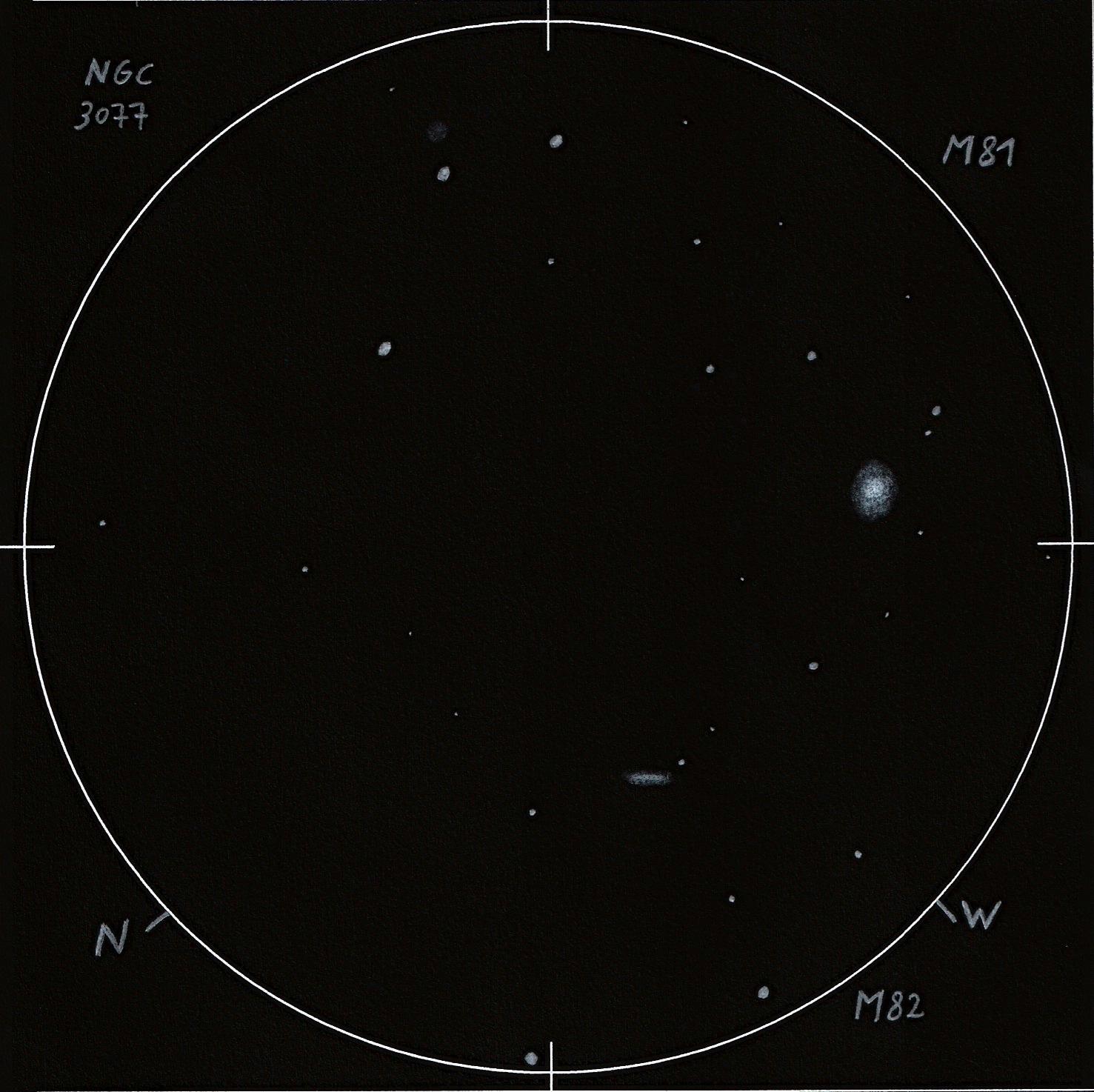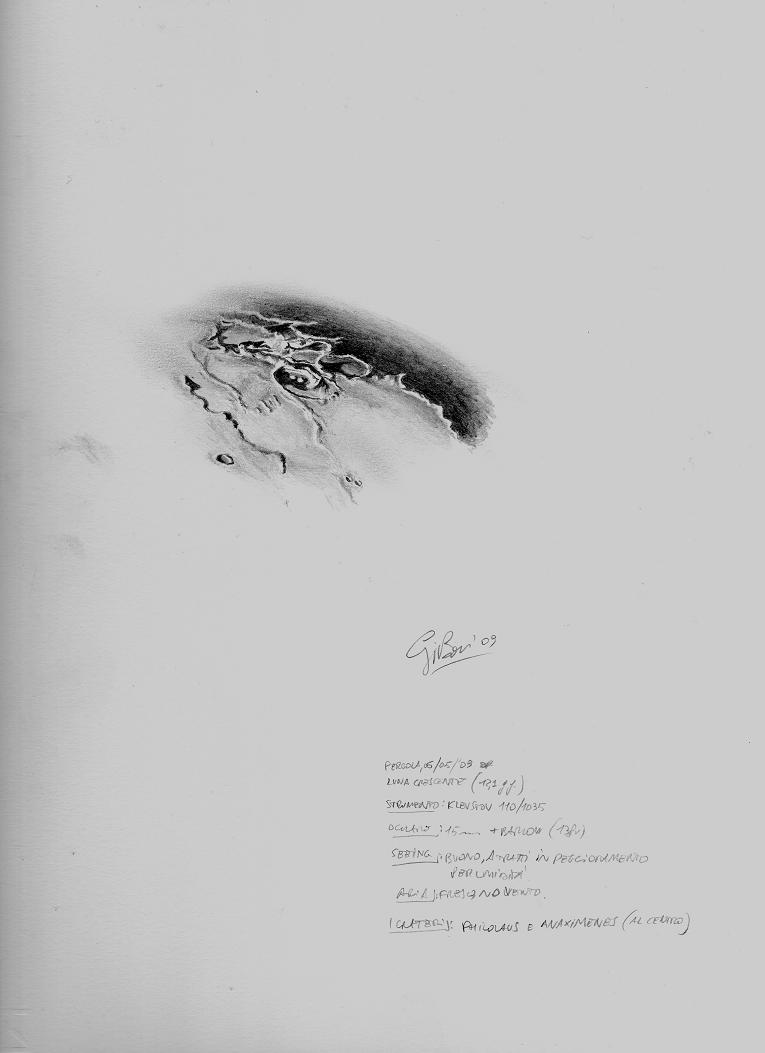
M81, M52 and NGC 3077 in Ursa Major
Sketch and Details by Jef De Wit
M81 and M82 are an impressive duo. But a lot of people don’t know that there is a third galaxy in the neighbourhood (NGC 3077, magnitude: 9,8, surface brightness: 13,2). Even in a small telescope (like my 2,75 inch refractor) you can easily see a lot of detail in this trio.
M81 is the biggest and best visible of the three, M82 is a little less bright than M81 and NGC 3077 was only visible with averted vision. Nice are also the differences in form. NGC 3077 is round, M81 is oval (elongated NW-SE) and M82 is oblong (elongated NE-SW). M81 is the only galaxy with a bright nucleus and a big difference in brightness between the core and the outer halo, M 82 has a less difference in brightness and NGC 3077 is uniform, without any detail.
The problem making this sketch was that I couldn’t see the three galaxies at once in the wide angle eyepiece. To see the edge I had to look around the corner. This made it (for me) difficult to position the stars. Normally I limit a sketch to the field of view I can see at once.
Once inside I made some brightness adjustments to the stars and finished the galaxies with the use of a blending stump (at the eyepiece I work with contour lines). After scanning I did some cleaning up with Paint.
I hope you like this “Ursa Major Triplet”.
Clear skies
Jef De Wit
Object Name: M81, M82 and NGC 3077
Object Type: galaxies
Location: Buis-les-Baronnies, France (44°16 north Lat. 5°16 east Long.)
Date and time: 15 April 2009 around 1.15 UT
Equipment: Meade ETX-70 (2,75 inch refractor)
Eyepiece: 7mm Nagler type 6 (FOV 1,6° and magnification 50x)
NELM: 5,7 mag
Medium: graphite pencils HB/2 and 8B, blending stump, printing paper, scanned and inverted, some cleaning up was made with Paint





